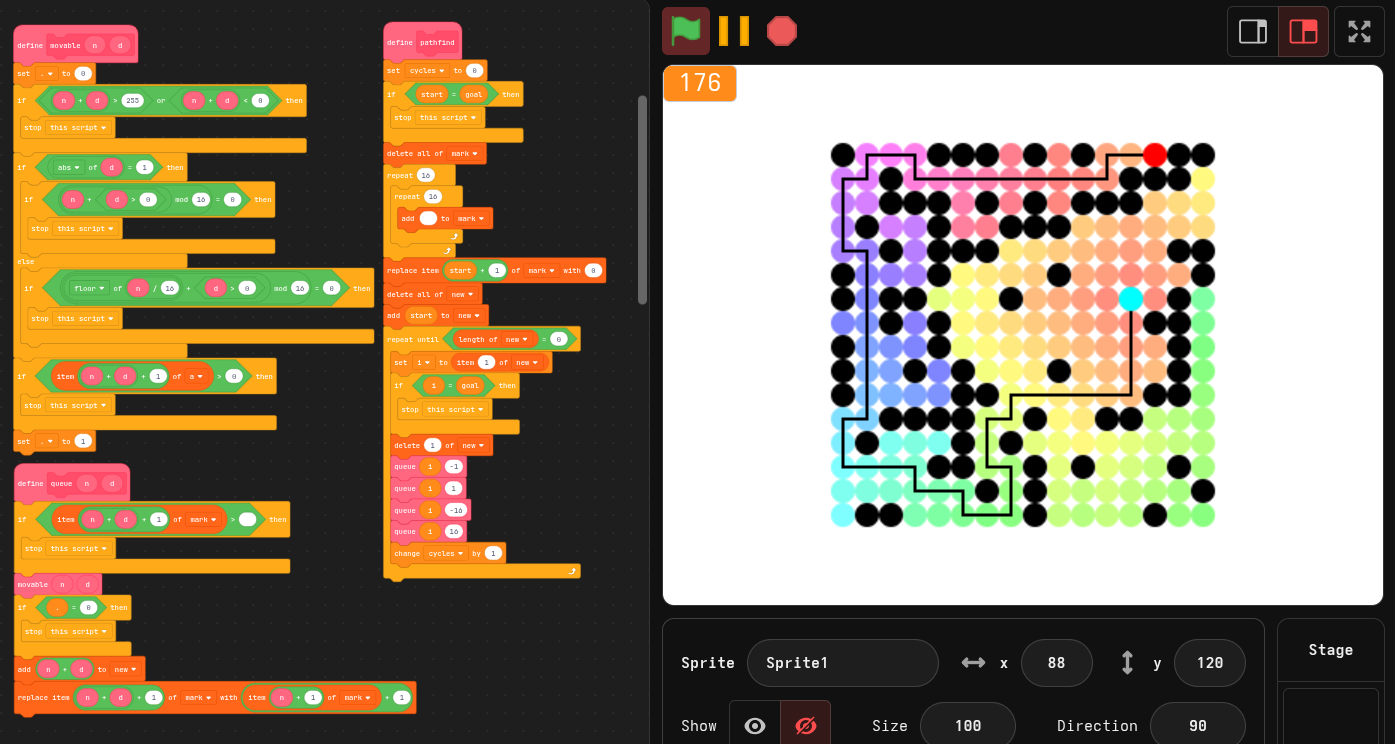
deluge subpost it is not coming out for a very long time
but it's also kind of its own thing so i decided to split out
breadth-first search (BFS): simplest good pathfinding algorithm
it explores the area around the start til it finds the end (solved!) or can't explore any further (no path)
here's an interactive intro from redblobgames
what data structures do we need?
n*n)
i suspect it's closer to 4(n-1) (max frontier on empty map) but better safe than sorry )n*n)
dimensions should be a nice power of two
i like to use Scratch as a visual playground, nothing beats the interactivity
main downside is that it doesn't translate well to lower-level stuff (datatypes/overflow/bit-operations)
Tbh I think scratch is hard mode - bullno1

visualizations are cool :D
this implementation is slightly different from what i explained earlier,
it uses a map of distance rather than direction to give us those pretty gradients
this is less efficient
because the path backtracker must compare distances of each neighbouring tile
to find the correct direction
now that we understand how BFS works, let's implement it in uxntal!
- queue of nodes to visit
- map of directions to visited tiles
queue shall be a circular buffer, we don't even need to worry about the "circular" part because the range is 0-255 like a byte, so our index will just wrap around :D
as for the map, 1 tile is half a byte or 1 nybl, so map shall be a simple nyblmap (map of nybls!)
how about returning the path?
the path is actually calculated backwards, we backtrack from the goal and collect directions along the way
so the last direction we collect is the starting direction -- this is a stack!
fortunately our circular buffer impl can also behave like a stack, and since the node queue is temporary storage that won't be used after a path has been found, we can reuse it to store the path result!
16x16 = 256, we can store nodes in a single byte
(y is higher nybl and x is lower nybl)
i want the search area to be centered on a tile so make it 15x15
that'll lose us 16 + 15 = 31 tiles
but it compensates by allowing us to detect wraparound easily :D
put the search origin in the middle: (8,8)
range is ±7 so 0x1 - 0xf
if we're on the low edge 0x1 and try to move even lower, it'll become 0x0
if we're on the high edge 0xf and try to move even higher, it'll wrap around to 0x0 too!
so detecting wraparound is as simple as checking if either x or y nybl is 0!
no need to care which direction we're coming from because either way falls into the 0x0 gutter
%guttered ( index -- guttered? ) {
DUP #0004 SFT2 #04 SFT MUL #00 EQU
}
this part actually tripped me up twice
original impl: #0f AND #00 EQU ?&skip DUP #f0 AND #00 EQU ?&skip (31 bytes)
if x is 0 then skip; if y is 0 then skip
if x OR y is 0 then skip
#0f AND ?&no-skip DUP #f0 AND ?&no-skip !&skip &no-skip (24 bytes)| rawra | 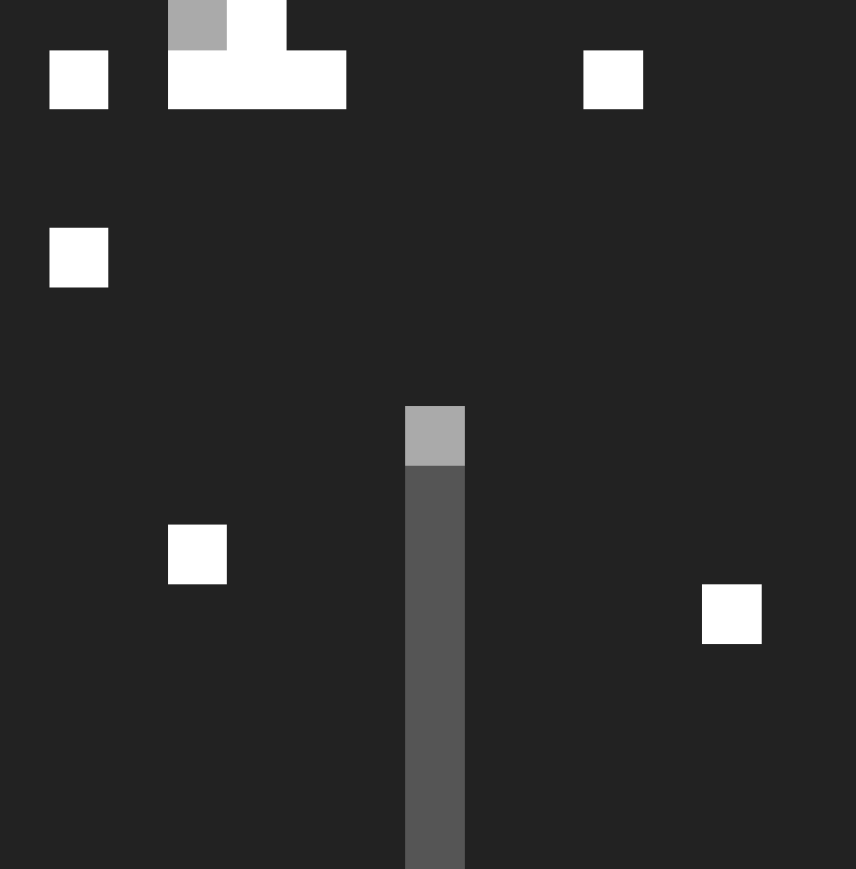 |
| rawra | Isnt this a bug or am I tripping |
| notchoc | oh yea that is definitely a bug |
| notchoc | wow how did you break it so fast HAHAHA |
| rawra | im a very skilled destroyer of software |
if x is not 0 then do not skip; if y is not 0 then do not skip
if x AND y are 0 then skip
see the difference?
yeah, i sure didn't, classic case of confusing AND with OR (which would catch only the corner gutters)
#0004 SFT2 MUL #00 EQU ?&skip (17 bytes) 🥹#0004 SFT2 splits yx into their own bytes 0y and x0,
then the MUL acts as an integer AND (if either byte is 0 then the result will be 0)
| rawra | 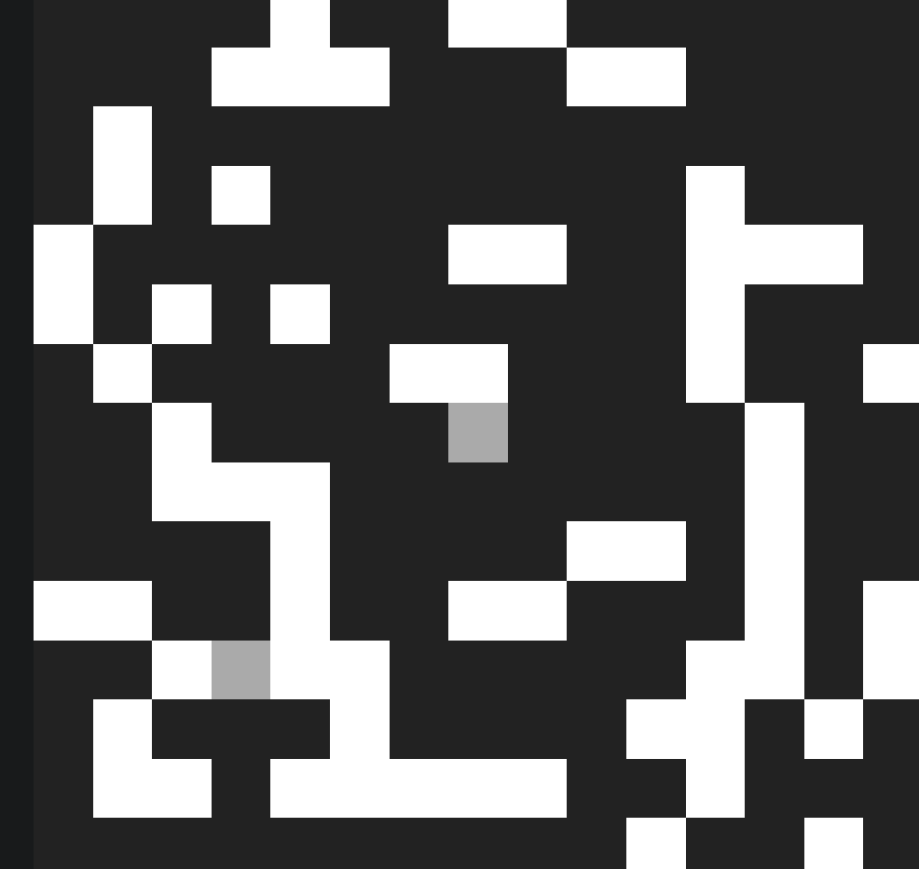 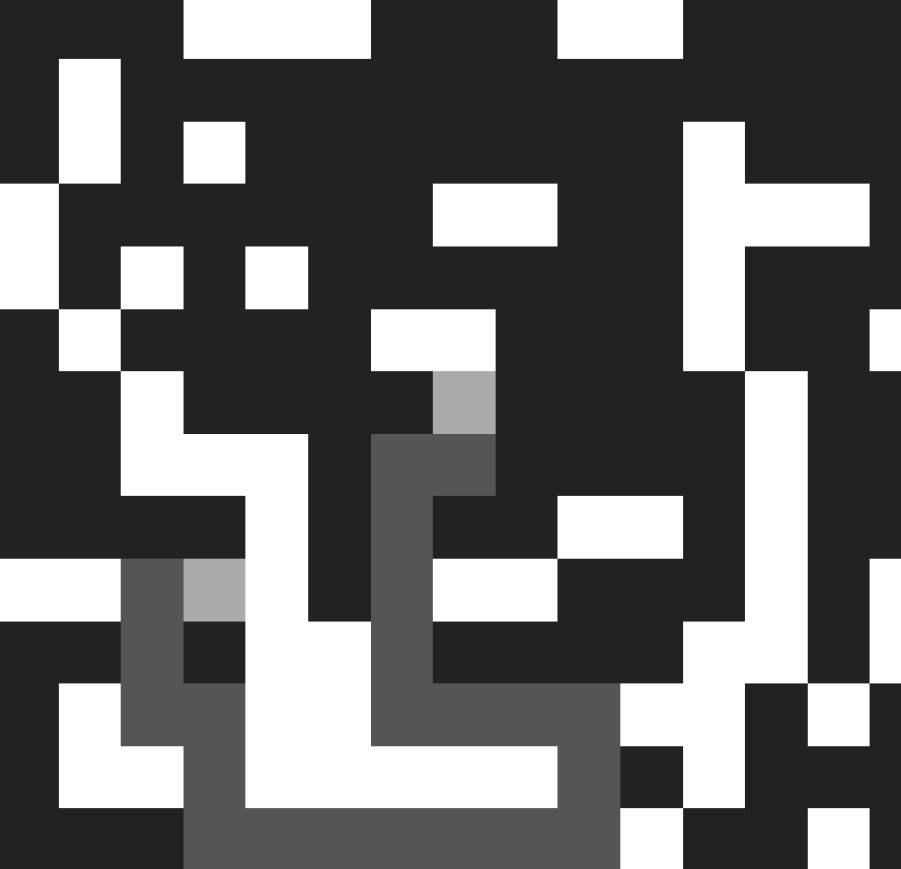 |
| rawra | cursed position lmao |
| notchoc | reproducible |
| notchoc | 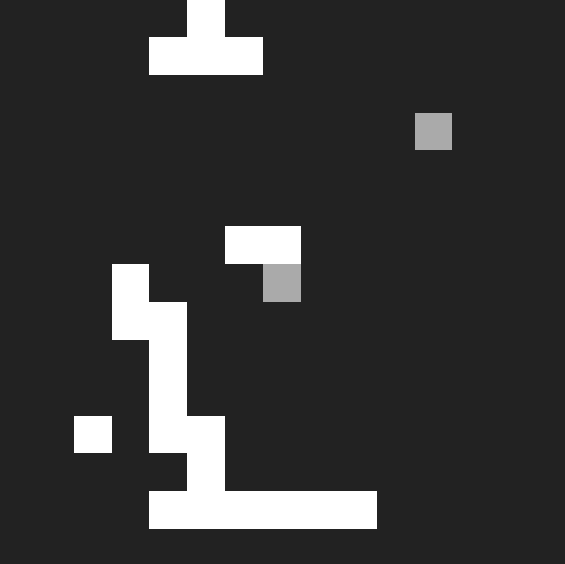 |
| notchoc | ... it happens on the + tooo |

here's a map of all the "cursed" positions:

interesting pattern...
#0004 SFT2splitsyxinto their own bytes0yandx0, then the MUL acts as an integer AND (if either byte is 0 then the result will be 0)
let's take the top left diagonal (4,4), index is 44
#0004 SFT2 ( 44 -- 04 40 )
MUL ( 04 40 -- 00 )
huh?? both values are clearly nonzero, so why is the MUL giving us 0?
calculating 0x04 * 0x40 gives us 0x100... which gets truncated to 0x00
let's try the axes, (8,6) -> 68
#0004 SFT2 ( 68 -- 06 80 )
MUL ( 06 80 -- 00 )
0x06 * 0x80 = 0x300 which is again truncated to 0x00
the x nybl is leftshifted by 4 bits,
if the result of x*y would have been a multiple of 0x10,
then it would also be leftshifted into 0x00 and return a false positive
#0004 SFT2 #04 SFT MUL #00 EQU ?&skip (20 bytes)solution? un-leftshift the x nybl
so
#0004 SFT2splitsyxinto their own bytes0yandx0,
becomes
#0004 SFT2 #04 SFTsplitsyxinto their own bytes0yand0x,
since x and y can never exceed 0x0f,
multiplying them will always give a value within 0x100
no more false positives :D
and our pathfinding impl works perfectly!
some custom syntax here, maybe in a future blogpost...
made with <3 and /.gen.sh